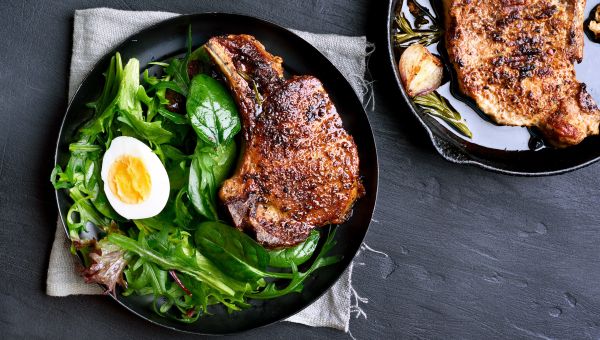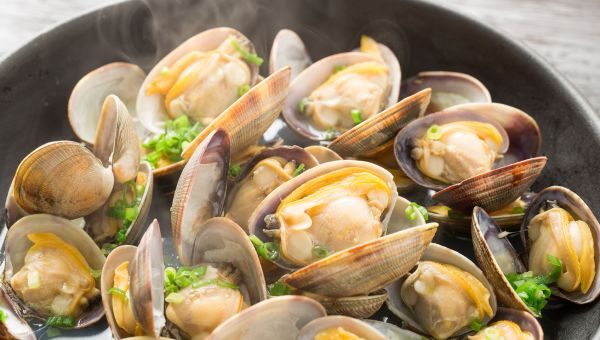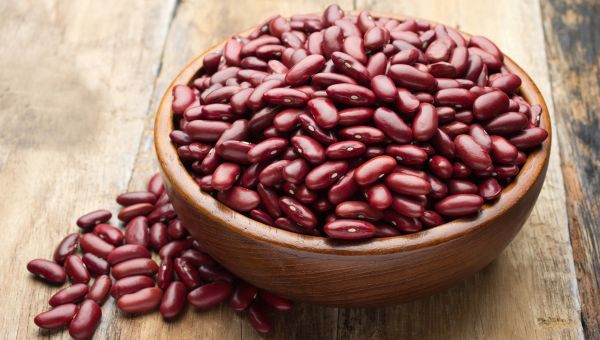6 iron-rich foods to boost your energy
Changing up your diet may help your iron-deficiency anemia

Iron is an essential mineral that we get through the foods we eat. There are two sources of iron: heme iron, found in animal protein and fish; and nonheme iron, which is primarily found in plants and foods that have been fortified with iron.
Iron plays a critical role in energy production in the human body. As a component of red blood cells, it binds with oxygen that is… Show More
Iron is an essential mineral that we get through the foods we eat. There are two sources of iron: heme iron, found in animal protein and fish; and nonheme iron, which is primarily found in plants and foods that have been fortified with iron.
Iron plays a critical role in energy production in the human body. As a component of red blood cells, it binds with oxygen that is absorbed through the lungs and then carries that oxygen to cells throughout the body; that oxygen then becomes part of the chemical process of energy production.
When your body does not have enough iron, your cells do not receive enough oxygen and cannot produce enough energy. End result: You’re tired.
If your healthcare provider tells you that you need more iron in your diet, try adding these energy boosters to your shopping list.
Show Less
1. Steak
Red meat is a good source of heme iron, which is more readily absorbed by the body than nonheme iron. An 8-oz steak contains about 6mg of iron, which makes it a good choice if you need to up your iron levels. However, remember that steak is also high in saturated fat and studies have shown… Show More
Red meat is a good source of heme iron, which is more readily absorbed by the body than nonheme iron. An 8-oz steak contains about 6mg of iron, which makes it a good choice if you need to up your iron levels. However, remember that steak is also high in saturated fat and studies have shown consumption of red meat is associated with a number of diseases, including heart disease and cancer. So while red meat is a great source of iron, get the benefit without going overboard by sticking to fewer than five servings of red meat a week.
When you do eat steak, buy a lean cut of meat, cook it at home and use salt sparingly. Red meat prepared in restaurants tends to be heavily salted and seasoned with ingredients that add extra calories and fat. Also, steak in restaurants tends to be expensive.
Show Less
2. Clams
Clams are practically made of iron—a 3-oz serving of cooked clams is packed with 23.8 mg of iron—that’s almost three steaks worth of iron at a fraction of the serving size. Plus, clams are much lower in saturated fat. Be sure to always cook clams thoroughly.
If you want to get adventurous and… Show More
Clams are practically made of iron—a 3-oz serving of cooked clams is packed with 23.8 mg of iron—that’s almost three steaks worth of iron at a fraction of the serving size. Plus, clams are much lower in saturated fat. Be sure to always cook clams thoroughly.
If you want to get adventurous and branch out your seafood menu, you can also try octopus. While not as high in iron as clams, this eight-armed mollusk boasts a respectable 8.1 mg of iron in a cooked 3-oz serving.
Show Less
3. Fortified Cereals
Many breakfast cereals, both hot and cold, are fortified with iron, oftentimes 18mg per serving, which is 100 percent of the daily recommended amount for an adult, premenopausal woman. When choosing a cereal, avoid brands that are high in sugar, since overconsumption of sugar can contribute to… Show More
Many breakfast cereals, both hot and cold, are fortified with iron, oftentimes 18mg per serving, which is 100 percent of the daily recommended amount for an adult, premenopausal woman. When choosing a cereal, avoid brands that are high in sugar, since overconsumption of sugar can contribute to other health problems including weight gain and diabetes.
Show Less
4. Green Peas
Compared to the earlier entries on this list, green peas may not seem particularly high in iron, with only 2.1mg of nonheme iron per cup. However, peas are packed with another nutrient that can have a positive impact on your iron levels: Vitamin C.
Heme iron is more easily absorbed by the body, but… Show More
Compared to the earlier entries on this list, green peas may not seem particularly high in iron, with only 2.1mg of nonheme iron per cup. However, peas are packed with another nutrient that can have a positive impact on your iron levels: Vitamin C.
Heme iron is more easily absorbed by the body, but research has shown that you can boost your body’s ability to absorb nonheme iron by consuming a food high in vitamin C with your meal. With 58mg of vitamin C per cup, peas make a great side dish, especially when you’re looking to boost your iron levels with plant-based foods.
Show Less
5. Kidney Beans
Great as an ingredient in dishes like salads and chili, or on their own as a side dish, kidney beans offer 3.9mg of nonheme iron per cup, and are also a good source of fiber, protein and several other important nutrients. If you can, buy dried beans and boil them yourself since dried beans have a… Show More
Great as an ingredient in dishes like salads and chili, or on their own as a side dish, kidney beans offer 3.9mg of nonheme iron per cup, and are also a good source of fiber, protein and several other important nutrients. If you can, buy dried beans and boil them yourself since dried beans have a slightly better nutrition profile (and as a bonus, they tend to be a little bit cheaper). If you buy canned beans, opt for the “No Salt Added” option, as canned beans can be high in sodium.
Show Less
6. Dark Chocolate
What would any list of foods be without a dessert? One ounce of dark chocolate offers 3.4mg of nonheme iron, depending on the purity of the chocolate; check nutrition labels, and look for dark chocolate that is 70 to 80 percent cacao solids. As always, be sure to check the nutrition facts and… Show More
What would any list of foods be without a dessert? One ounce of dark chocolate offers 3.4mg of nonheme iron, depending on the purity of the chocolate; check nutrition labels, and look for dark chocolate that is 70 to 80 percent cacao solids. As always, be sure to check the nutrition facts and ingredients to ensure you’re choosing a quality chocolate, and consume chocolate in moderation to keep your fat and sugar intake to a minimum.
Show Less
National Heart, Lung, and Blood Institute. Iron-Deficiency Anemia.
MedlinePlus. Iron deficiency anemia.
Caroline Kaufman. Foods to Fight Iron Deficiency. Eat Right, Academy of Nutrition and Dietetics. January 23, 2020.
Harvard T.H. Chan School of Public Health. Iron.
National Institutes of Health Office of Dietary Supplements. Iron.
Mayo Clinic. Iron deficiency anemia.
Heart.org. How does Plant-Forward (Plant-Based) Eating Benefit your Health?
Lentils.org. Nutritional Information.
Harvard T.H. Chan School of Public Health. Lentils.
Harvard T.H. Chan School of Public Health. Legumes and Pulses.
Yanni Papanikolaou and Victor L Fulgoni. Bean consumption is associated with greater nutrient intake, reduced systolic blood pressure, lower body weight, and a smaller waist circumference in adults: results from the National Health and Nutrition Examination Survey 1999-2002. The Journal of the American College of Nutrition, 2008. Vol. 27, No. 5.
Harvard T.H. Chan School of Public Health. Chia Seeds.
Cleveland Clinic healthessentials. The 6 Best Seeds to Eat.
Joe A. Vinson, Ligia Zubik, et al. Dried fruits: excellent in vitro and in vivo antioxidants. The Journal of the American College of Nutrition, 2005. Vol. 24, No. 1.
Cleveland Clinic healthessentials. How to Add Foods That Are High in Iron to Your Diet.
NHS. Vitamin C.
Frank S. Fan. Iron deficiency anemia due to excessive green tea drinking. Clinical Case Reports, 2016. Vol. 4, No. 11.
More On


video

slideshow


video


video
